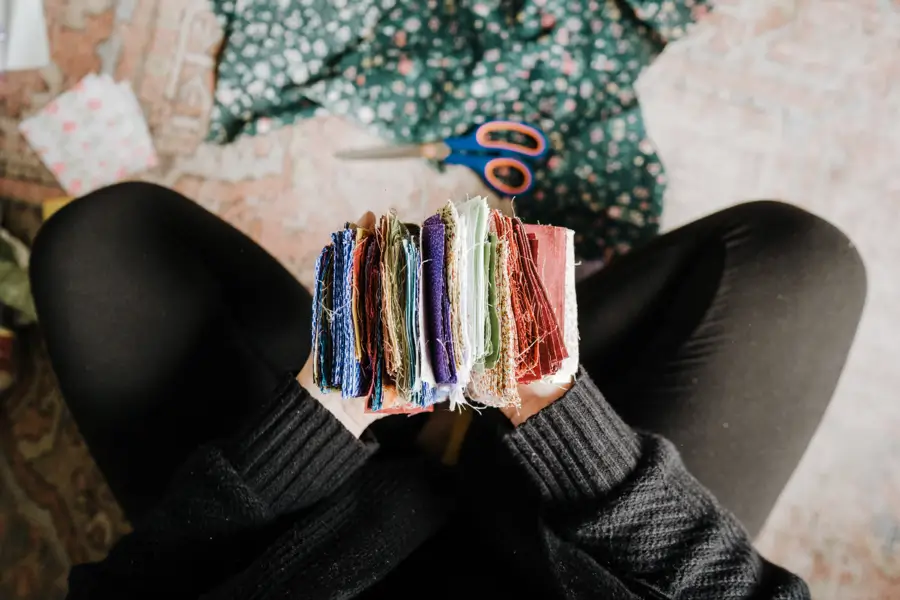
PROFESSIONAL DEVELOPMENT

In the world of fashion design, fabric selection plays a crucial role in the creation of stunning garments. Every fashion designer understands that the choice of fabric can make or break a design. It not only affects the overall aesthetics but also influences the comfort, durability, and practicality of the finished product.
In this article, we will delve into the importance of fabric selection in fashion design and explore the various types of fabrics available to designers. We will also discuss the role of textiles in fashion sustainability, examine how fabric properties influence design, and peek into the future of fabrics in fashion. So, let’s begin!
Fabric selection is a fundamental aspect of fashion design that can significantly impact the final outcome of a garment. It goes beyond mere aesthetics and encompasses a range of factors such as comfort, functionality, and visual appeal.
The choice of fabric sets the tone for the design, determines the garment’s performance, and influences the overall customer experience. When selecting fabrics, fashion designers carefully consider factors such as texture, weight, drape, durability, and care requirements.
Textiles are the materials used to create fabrics, which in turn are used to make garments and accessories. They form the building blocks of fashion design, serving as the canvas on which designers express their creativity.
Textiles provide the necessary structure, shape, and form to bring a design concept to life. They can enhance the visual appeal of a garment, add dimension through texture, and contribute to the overall comfort and functionality of the finished product.
The choice of fabric can dramatically transform a design. Different fabrics have unique qualities that influence how a garment looks and feels.
For example, a flowing silk fabric can create an elegant and ethereal silhouette, while a structured wool blend can convey a sense of sophistication and warmth.
Fabric choice also affects how a garment drapes, moves, and interacts with the body. It can enhance or obscure certain design details, emphasize or minimize body contours, and create different levels of visual interest.
In the vast world of textiles, there is a wide array of fabrics available to fashion designers. Understanding the characteristics and properties of different fabric types is essential for making informed decisions during the design process.
Let’s explore the three primary categories of fabrics: natural, synthetic, and blended.
Natural fabrics are derived from organic sources, such as plants and animals. They have been used in textile production for centuries and continue to be popular choices in fashion design.
Synthetic fabrics are man-made materials created through chemical processes. They offer unique properties and are often chosen for their durability, affordability, and ease of care.
Blended fabrics are created by combining two or more different types of fibers to achieve desired characteristics. Blends offer the advantages of both natural and synthetic fibers, resulting in improved performance and versatility. Common fabric blends include cotton-polyester, wool-acrylic, and silk-linen.
Blended fabrics can offer enhanced durability, wrinkle resistance, moisture management, and comfort. They can combine the softness of natural fibers with the strength and resilience of synthetic fibers. Blends are frequently used in a wide range of garments, providing designers with a flexible and functional material option.
In recent years, the fashion industry has been increasingly focused on sustainability and reducing its environmental impact. Fabric choice plays a vital role in promoting sustainability in fashion design. By opting for sustainable and eco-friendly fabrics, designers can contribute to a more environmentally conscious industry.
Here are some key considerations:
The production of textiles, especially synthetic ones, can have a significant environmental footprint. Processes like chemical dyeing, water consumption, and energy usage contribute to pollution and resource depletion.
Fashion designers can choose eco-friendly alternatives such as organic cotton, hemp, bamboo, and recycled fibers to minimize their environmental impact.
Several sustainable fabric options are gaining popularity in the fashion industry.
These include organic cotton, which is grown without the use of harmful pesticides; hemp, a versatile and low-impact fiber; bamboo, known for its rapid growth and minimal need for pesticides; and fabrics made from recycled materials, such as recycled polyester and nylon.
By incorporating these sustainable fabrics into their designs, fashion designers can contribute to a more sustainable future.
Fabric properties play a crucial role in determining the suitability of a material for a particular design.
Here are some key fabric properties and their influence on the design process:
Texture refers to the surface characteristics of a fabric, such as smoothness, roughness, or graininess. It can create visual interest and tactile appeal in a design. The weight of a fabric, on the other hand, affects how it drapes and falls on the body. Lightweight fabrics create fluid and airy silhouettes, while heavier fabrics lend structure and volume to the design.
Designers consider texture and weight when choosing fabrics for specific garment styles. For example, a flowing evening gown may require a lightweight fabric with a smooth texture, while a tailored blazer may call for a medium-weight fabric with a structured texture.
Durability is an essential consideration in fashion design, ensuring that garments can withstand regular wear and care. Fabrics with high durability can maintain their quality and appearance over time, while less durable fabrics may show signs of wear and tear more quickly.
Care requirements also play a role in the practicality of a design. Some fabrics are easy to care for, while others may require special attention such as dry cleaning or delicate washing.
Designers need to consider the care requirements of the chosen fabrics to ensure that the garments remain in good condition and retain their desired appearance.
The world of fabrics and textiles is constantly evolving, driven by innovation and technological advancements.
Here are some exciting trends and developments that shape the future of fabrics in fashion design:
Technological advancements have revolutionized textile production, leading to the creation of cutting-edge fabrics with enhanced performance and functionality.
Innovations such as smart textiles, 3D printing, and sustainable fabric production methods are opening up new possibilities for fashion designers.
Smart textiles integrate technology, allowing garments to interact with the wearer or the environment, while 3D printing enables the creation of intricate and customized fabric structures.
Fashion designers are continually exploring new fabric combinations, textures, and finishes to create unique and eye-catching designs. Experimental materials, unconventional fabric pairings, and sustainable fabric alternatives are gaining popularity.
Designers are also incorporating cultural influences, traditional craftsmanship, and storytelling into fabric choices, infusing their designs with depth and meaning.
As the fashion industry evolves, fabric selection will continue to be a dynamic and creative process, driven by a desire for innovation, sustainability, and unique expression.
In the world of fashion design, fabric selection is an art form that requires careful consideration and expertise. The choice of fabric can bring a design to life, enhance its visual appeal, and contribute to the overall experience of the wearer.
By understanding the various types of fabrics, their properties, and their impact on design, fashion designers can make informed decisions that align with their creative vision and sustainability goals.
Whether it’s the softness of silk, the durability of polyester, or the eco-friendliness of organic cotton, each fabric brings its own unique characteristics to the fashion landscape. As technology advances and new materials emerge, the future of fabrics in fashion design holds exciting possibilities, pushing the boundaries of creativity and sustainability.
So, go ahead and let your fabric choices weave a story that captivates the world of fashion.
Read More

The Art Career Project is a trusted resource for emerging and professional artists.